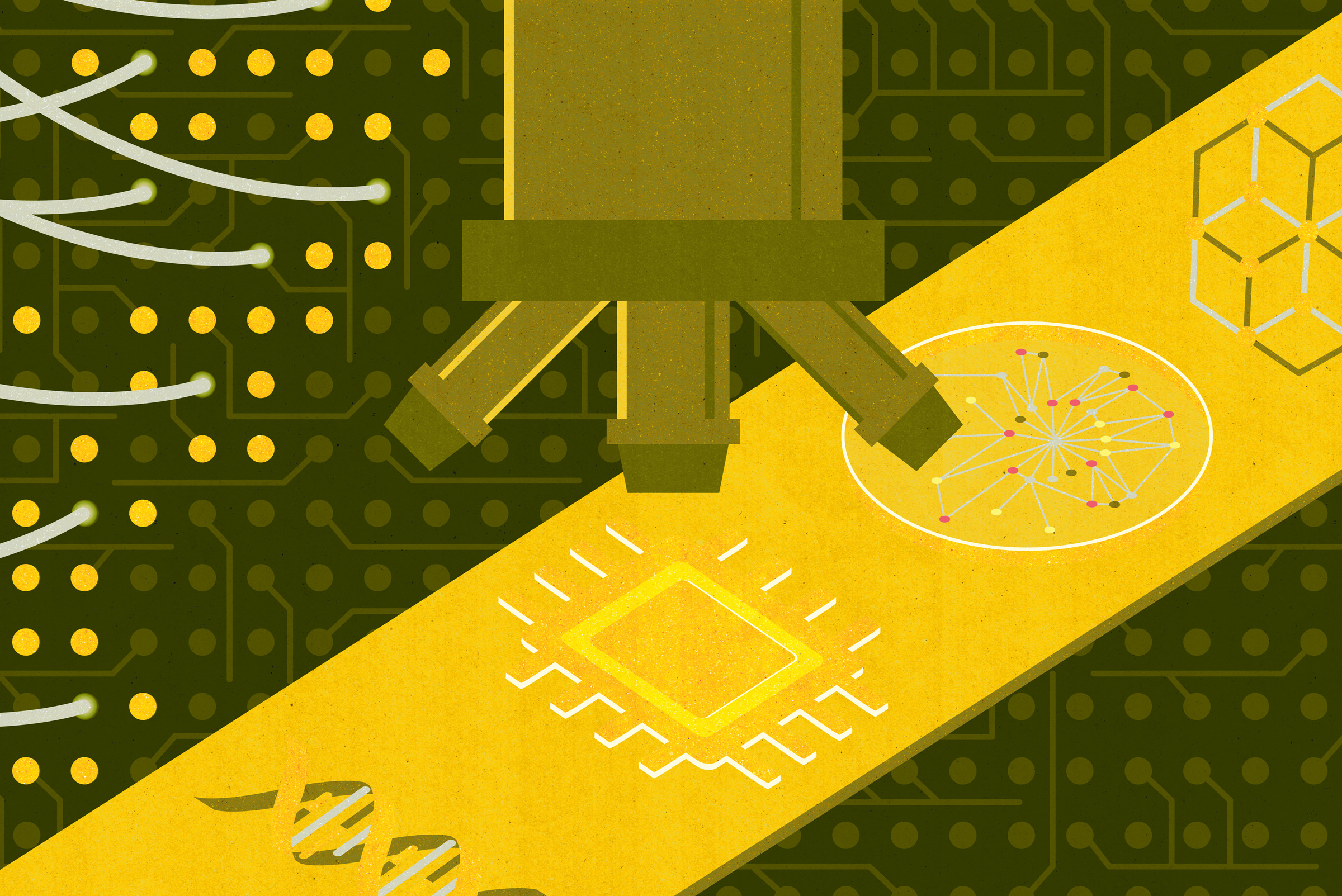One promising strategy for mitigating the environmental effects of CO2 emissions is to convert the CO2 via electrochemical reduction into high value-added molecules such as methanol and ethylene. These commercially valuable products could help ensure the economic viability of deploying carbon capture and conversion technologies to offset CO2 emissions, while simultaneously reducing our reliance on new fossil sources to produce fuel and petrochemicals. The ion selective membrane is a key component that needs to be optimized to achieve highly efficient and stable CO2 reduction devices, as current offerings do not meet key specifications for industrial scale applications.
On May 15, 2019, CIFAR convened a roundtable to discuss developments in ion selective membranes for CO2 electrolyzers. This workshop brought together leaders from across the fields of electrochemistry, polymer chemistry and energy research, including Fellows from CIFAR’s program in Bio-inspired Solar Energy, as well as experts from other academic institutions, national labs and industry. Through brief primer talks and moderated discussions, attendees explored a number of properties of polymeric membranes that are subject to optimization, including membrane chemistry, conductivity, stability and permeability. This meeting is the first in a series that will work towards a roadmap for the research and development of commercial-scale CO2 reduction systems, one that takes account of membranes, catalysts and other relevant technologies.
Impacted Stakeholders
- Commercial developers of carbon electrolyzers
- National energy and materials labs
- Manufacturers of polymeric membranes
- Energy companies with interests in: carbon capture and conversion, production of carbon-neutral or -negative fuels, storage of intermittent energy from renewable sources
- Energy and climate policy practitioners
Key Insights
- The chemical and physical composition of the polymers that comprise electrolytic membranes affect membrane properties such as ion conductivity, reactant/product diffusion and mechanical strength, in turn strongly impacting the efficiency of CO2reduction devices.
- Key problems in the optimization of membranes, such as product crossover, conductivity, stability (in alkaline conditions or moderate-high temperatures) and water management, are intrinsically interconnected. As such, a systems-level approach should be used rather than tackling each problem in isolation. Other factors that need to be taken into account when moving from lab to industrial scale include the purity of the CO2 source and the cost of separating desired products from byproducts.
- Because of the low solubility and diffusibility of CO2 in aqueous electrolytes, one approach to increasing the efficiency of CO2 electrolysis is to use gas diffusion electrodes. Current experimental gas-fed CO2 reduction devices have achieved high current densities, but it will be important to better characterize the triple phase boundary (the interface of the gas phase reactants, aqueous electrolyte, and solid polymers and catalysts) in such devices.
- The economics of CO2 electrolysis is sensitive to faradaic efficiency (the selectivity of CO2reduction to the desired product), energetic efficiency (the proportion of energy input stored in the desired product) and the price of electricity, among other factors. At current economic conditions, 2-electron products (molecules whose conversion from CO2 requires two electrons, such as CO and formate) may be profitable.
- Scaling up electrolytic devices to industrial scale will require standards or benchmarks against which researchers can compare their experimental membranes. Industrial membrane manufacturers have the capability to produce at scale to reduce batch-to-batch variability, but will need a market with sufficient demand to justify investments.
Priorities and Next Steps
- There are lessons for CO2 electrolysis from the fuel cell community, which has decades of research on relevant membranes. However, hurdles to straightforward knowledge translation between the fields include the fact that fuel cell designs converge on one goal, whereas CO2 electrolyzers have multiple products or objectives.
- Continued study of CO2 electroreduction reactions will be needed to fully characterize the radicals and other minor / exotic intermediate species and their effects on membrane degradation.
- Electrochemists should collaborate with membrane scientists to arrive at optimal designs of electrolytic membranes, e.g., by deciding on specific performance parameters for the electrolyzers that membrane scientists can work towards.
- Researchers and industry must maintain close conversation to achieve standards and benchmarks for electrolytic membranes. Governments and other funders can play an important role by providing the resources to facilitate scaled up production and set industry standards.
Roundtable Participants
- Shane Ardo, University of California, Irvine
- Chulsung Bae, Rensselaer Polytechnic Institute
- Bamdad Bahar, Xergy Inc.
- Curtis Berlinguette, University of British Columbia / CIFAR
- Phil De Luna, National Research Council Canada
- Todd Deutsch, National Renewable Energy Laboratory
- Jonathan Edwards, University of Toronto
- Christine Gabardo, University of Toronto
- Claire Hartmann-Thompson, 3M
- Michael Hickner, Pennsylvania State University
- Winston Ho, Ohio State University
- Steven Holdcroft, Simon Fraser University
- Shaffiq Jaffer, Total / CIFAR
- Feng Jiao, University of Delaware
- Kendra Kuhl, Opus-12
- Tom Mallouk, University of Pennsylvania / CIFAR
- Kenneth Neyerlin, National Renewable Energy Laboratory
- Peter Pintauro, Vanderbilt University
- Angelica Reyes, University of British Columbia
- Danielle Salvatore, University of British Columbia
- Ted Sargent, University of Toronto / CIFAR
- Stafford Sheehan, The Air Company
- Ken Shi, National Research Council Canada
- Lihui Wang, Opus-12
- Joshua Wicks, University of Toronto
- Zhifei Yan, University of Pennsylvania
- Fan Yang, Giner Inc.
Further Reading
New catalyst upgrades greenhouse gas into renewable hydrocarbons (news article on recent research from the lab of Ted Sargent, director of the Bio-inspired Solar Energy program)
Making fuel from water and CO2: The Importance of stabilizing highly reactive nickel catalysts in neutral pH solution (research brief)
Solar conversion of CO2 to CO using Earth-abundant electrocatalysts prepared by atomic layer modification of CuO (research brief)
For more information, contact Fiona Cunningham, Director, Innovation.
